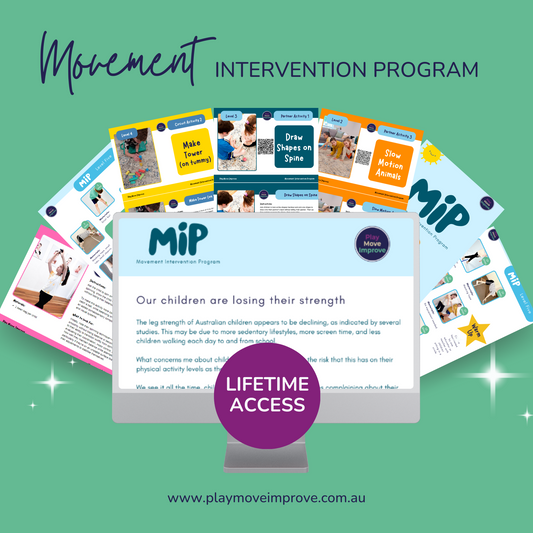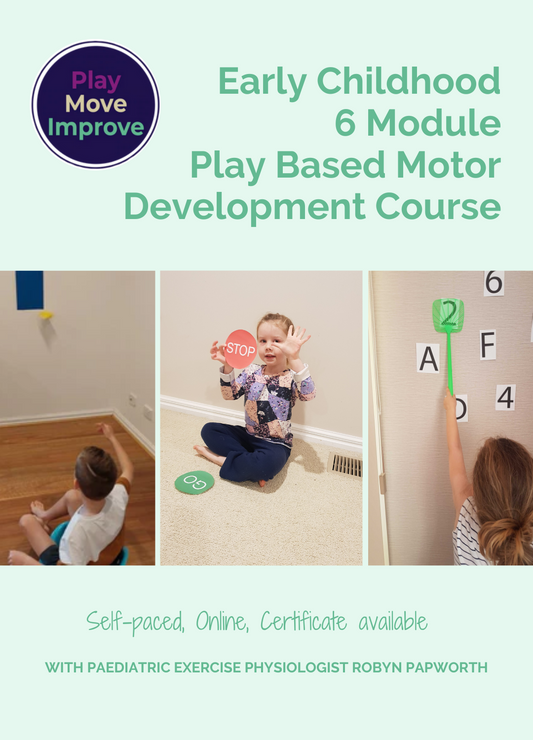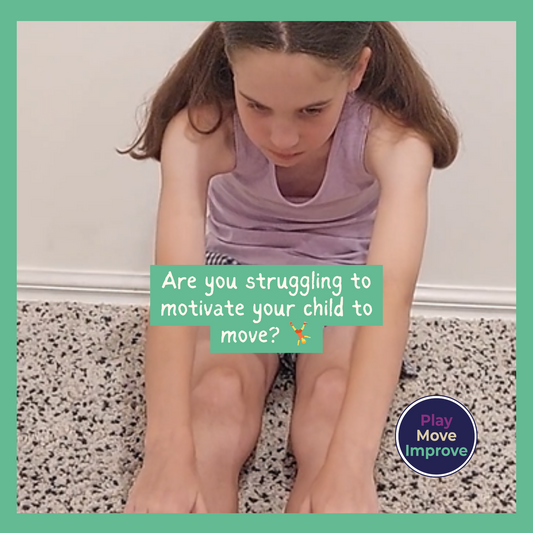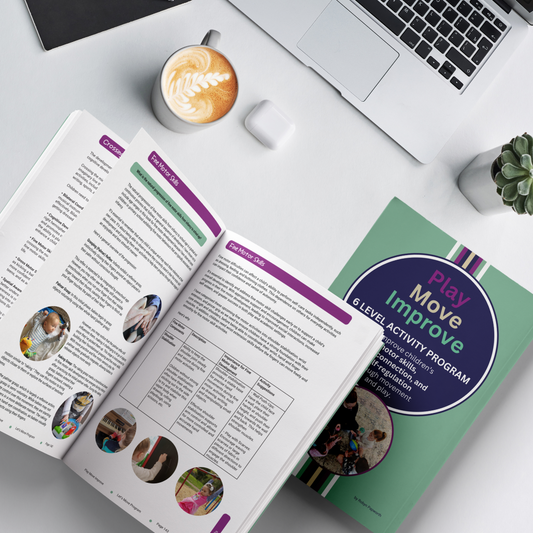Motor skill development is a fascinating journey to observe in children and adults, marked by significant milestones and achievements all the way from birth, through to learning a new skill as an adult.
The foundation for a baby, toddler and child's motor skill development can have an impact on their overall development. I saw this happen to my son as he struggled with his physical skills, and then found it difficult to socialise and play with his peers, particularly during active games such as obstacle courses and chasey.
In this blog article, I share with you some of the preschool motor skill development milestones, both gross and fine, and offer some suggestions for how we can support and nurture these essential skills.
Gross Motor Skills (Ages 3-5):
-
Locomotor Skills: Moving with Confidence
Preschoolers are on the move, and their locomotor skills are a testament to their growing confidence, balance, and physical abilities. They become more skilled in:
- Walking: By age 3, most children have mastered walking, but it's during these years that they refine their gait and balance - walking smoother, with less tippy toe or rotated feet techniques.
- Running: They develop a smooth, steady run and are eager to engage in playful running games that change speed and direction.
- Jumping: Jumping skills progress from small leaps to higher jumps using both feet at the same time across masking tape lines, hula hoops, and crash mats.
- Hopping: Many preschoolers can hop on one foot for short distances, demonstrating improved balance and coordination.
-
Galloping, skipping: The art of galloping and skipping, a combination of hopping and smooth steps, becomes a favourite mode of travelling from point A to point B.
- Set up a mini obstacle course in the classroom or outdoors, including hurdles to jump over, cones to weave through, and a straight-line path for running. Let children take turns navigating the course, encouraging them to use different locomotor skills.
-
Balance and Coordination
Balance and coordination are the building blocks of motor skill development, and can predict a child's confidence to play actively with their peers:
- Balancing on One Foot: Children at this age can balance on one foot for 3 to 5 seconds, without needing excessive arm or hip swing, or needing to hold onto something.
- Climbing: Climbing abilities improve, with kids having the confidence to climb A-frame ladders, playground structures, and even trees.
-
Skipping Rope: As their balance is improving, they start to be able to jump over a low lying slithering skipping rope. As their timing and coordination improves more, they begin to try and learn the art of jumping through a moving skipping rope like we used to do when we were kids.
-
Set up a mini obstacle course in the classroom or outdoors, including hurdles to jump over, cones to weave through, and a straight-line path for running. Let children take turns navigating the course, encouraging them to use different locomotor skills.
You can find a more specific movement program here, where all of the planning is done for you
-
Throwing and Catching: The Joy of Playing Ball
Preschoolers who are confident with their movement are eager to engage in ball games and develop basic throwing and catching skills:
- Throwing: They can throw a ball with increasing accuracy, aiming at a target or trying to toss it a specific distance.
-
Catching: Attempting to catch a large ball becomes a thrilling challenge, with improvements seen over time. Catching a smaller ball comes at primary school age, as they continue to improve their visual tracking, hand-eye coordination, and fine motor skills.
- Use a soft foam or fabric ball as the "cloud." Have children form a circle and gently toss the "cloud" to one another. Encourage catching and throwing with both hands, improving bilateral coordination.
Fine Motor Skills (Ages 3-5):
-
Drawing and Painting
Fine motor skills blossom once children have mastered the gross motor skills above. Children who rush through the skills above, without mastering each step, may find these fine motor activities challenging and sometimes frustrating.
-
Drawing: They become more precise with crayons, paint brushes and markers, progressing from random scribbles to recognisable shapes and objects.
-
Drawing: They become more precise with crayons, paint brushes and markers, progressing from random scribbles to recognisable shapes and objects.
-
Cutting with Scissors
Introducing safety scissors to preschoolers:
-
Tearing paper: Before children pick up a pair of scissors. Make sure that they can tear paper using their pincer grip, and their elbows not sticking out to the side. Learn more here
-
Cutting along Lines: As children master tearing paper, children can follow lines with scissors, though supervision is essential. Again, make sure that children's elbows aren't sticking out to the side. If they are, go back to the gross motor skills section and make sure all of those milestones are smooth and mastered first. Motor development is a pattern of movements to master, not a race to get to drawing and scissors.
-
Tearing paper: Before children pick up a pair of scissors. Make sure that they can tear paper using their pincer grip, and their elbows not sticking out to the side. Learn more here
-
Puzzle Play: Building spatial awareness
Fine motor skills shine during puzzle activities:
- Building with Blocks: Children refine their grasp and placement of blocks, creating structures of their own design. Building skills become more elaborate, the more children improve their spatial awareness and fine motor skills.
-
Fitting Small Pieces: Puzzles with smaller pieces challenge their hand-eye coordination and dexterity. It also improves their resilience and confidence with problem solving. An important self-regulation skill moving into school.
-
Buttoning and Zipping: Dressing Independence
Clothing fasteners become a source of fascination and a test of fine motor skills rather than frustration:
-
Buttoning: Preschoolers may begin to button and unzip clothing, although this skill often takes time to master. The more you give children time to master these skills themselves, the less you need to help them at a later time because their brain and body has been learning these skills.
-
Buttoning: Preschoolers may begin to button and unzip clothing, although this skill often takes time to master. The more you give children time to master these skills themselves, the less you need to help them at a later time because their brain and body has been learning these skills.
-
Stringing Beads: Precision and Patience
Stringing beads onto a string or shoelace is an excellent activity for fine motor development:
-
Hand-Eye Coordination: It improves their ability to thread small objects, fostering patience and precision.
-
Hand-Eye Coordination: It improves their ability to thread small objects, fostering patience and precision.
-
Handwriting Preparation: A Journey Begins
While legible handwriting usually starts closer to school age, the groundwork for writing is laid here, starting all the way from crawling and rolling, through to holding a pencil. If we miss crawling and rolling, handwriting can be challenging. Learn more here.
-
Forming Letters: Some children may experiment with forming letters, tracing lines, or imitating basic shapes. But this isn't a requirement during kindergarten. Children will develop more fundamental skills through climbing, building, imaginative play, than they will with sitting down and practicing forming letters.
-
Forming Letters: Some children may experiment with forming letters, tracing lines, or imitating basic shapes. But this isn't a requirement during kindergarten. Children will develop more fundamental skills through climbing, building, imaginative play, than they will with sitting down and practicing forming letters.
Preschool motor skill development is an exciting period filled with growth and achievement. As teachers and parents, we play pivotal roles in nurturing these skills. By offering opportunities for play, exploration, and activities that promote motor skills, we empower young children to unlock their physical potential and set the stage for a lifetime of healthy, confident movement.
If you're stuck for ideas, and need a simple printable program to follow, join our Let's Move program that includes:
- milestone checklists,
- movement videos for children to copy on rainy days, and
- simple indoor and outdoor movement activities for each milestone.
You can find a more specific movement program here, where all of the planning is done for you







